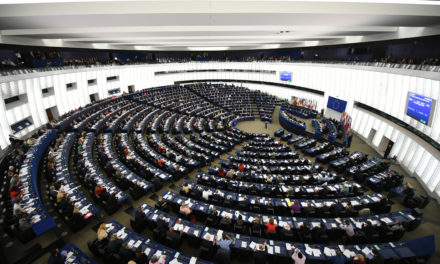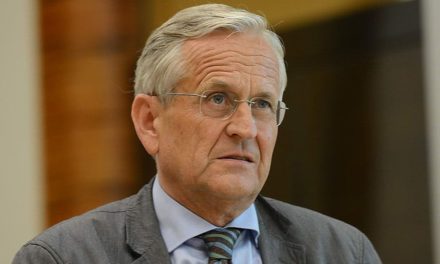Will the era of electric cars come? Who benefits from wartime sanctions? What advice do you have for Hungarian economic policy? We asked Zsolt Hernádi, the president and CEO of Mol, about the green transition and the competitiveness of Europe, including Hungary, in the energy industry.
One topic of our conversation is the review of Mol's strategy. Even at first reading, it is apparent that they think that the end of the fossil world is further away. Isn't the era of electric cars coming then?
There is no math that can be used to completely replace fossil fuel vehicles after 2035. The sales rate of new purely electric or plug-in hybrid cars in the region is low. In Hungary, it was only 5 percent in 2023, their share in the entire domestic workforce does not reach 1 percent.
It is clear that electric vehicles will not solve the transportation problem tomorrow, if at all. And what are we going to do with the many gasoline or diesel cars? The average age of cars in Hungary is 15 years and in Western Europe 10 years.
It is not difficult to calculate how many of them will still be on the roads after 2035. In April of last year, the EU legislators adopted the decree, according to which the average emissions of the stock of new passenger cars and commercial vehicles must be reduced by 100 percent from 2035, but at the last moment it was included in the legislation that the committee must develop the carbon dioxide-neutral fuel also the rules for registering vehicles. So the trend is obvious. Even the Union is beginning to realize that it is physically impossible to meet the 2035 goal and is trying to relax the rules. If you ask me, I expect they will continue to allow fossil fuels and regulate what the ratio of renewable fuel should be.
What is renewable fuel?
For example, biofuels such as biodiesel or ethanol. After processing and mixing seeds, food raw materials, plant and animal waste, the end result is a well-functioning diesel or alcohol that can drive vehicles with a slightly lower calorific value at a certain level of mixing without damaging the engine. But there is another solution, synthetic fuel. Put simply: we catch the carbon dioxide that has already been emitted where it is produced, and on the other side we break down the water into oxygen and hydrogen molecules with green current. Then we combine the two again and turn it into hydrocarbon, also with green electricity - so everything is pure green, and the artificial hydrocarbon is produced.
The biggest problem is that the procedure is terribly expensive. The estimates range widely, but we can talk about five to ten times the price compared to conventional fuels.
You can also drive a vehicle directly with hydrogen, in which case the fuel is cheaper, but the price of fuel cell vehicles and the charging infrastructure again means multiple operating costs, and the range of hydrogen-powered vehicles is significantly less than that of conventional solutions. In addition, these technologies are not fully matured on an industrial scale, and we are by no means able to produce as much of them as we produce traditional gasoline and diesel oil in, say, the Száchahalombatta refinery. Regardless, you should consider all options, but you shouldn't be dogmatic. The electric motor, hydrogen, synthetic fuels or fossil propulsion will not be the only solution, but some mixture of them. He who keeps every iron in the fire is wise. And it cannot be ruled out that by then the engineers will come up with some completely new approach that no one has thought of today, so we have to keep an eye on new technologies as well.
Have you modeled what the percentage of the European car fleet, your market, will look like after 2035?
So far, all predictions have been wrong, not even in the short term. Me
I have a feeling that after 2035, more than 50 percent of the cars running in the European Union will still be conventionally driven,
in fact, I think the number will be closer to 70 than 50 percent. I believe that different technologies will be present in parallel. But it has happened before. Even at the dawn of the automobile, electric drives, petroleum, alcohol and horses competed. Petroleum won.
50-70 percent internal combustion, 30 percent electric?
In ten to fifteen years, there will be about the same, yes. But this is my own estimate, I have twenty-five years of experience in it, and how much I don't believe in campaign-like solutions. But let's take a step back and look at the evolution of demand for fossil energy sources. Today we use three times as much energy as fifty years ago. As the population grows, and the average standard of living and consumption rises in parallel with it, so does the world's energy demand. More than 80 percent of this comes from fossil energy sources.
Globally, not a single fossil energy carrier has been replaced so far, and new ones have only been able to cover additional needs.
At the beginning of the industrial revolution, biomass, mostly wood, was the dominant energy source. We burn more wood today than we did then. Until now, we have not been able to replace fossil energy sources, only supplement them, their use in 2022 was the largest in history; there is no data yet on consumption in 2023. If we manage to replace them in the future, we will only be able to achieve it gradually, over many decades. Better to face it honestly.
There is one element of their recently updated strategy that is noteworthy from the point of view of the EU: they describe in a round pretzel that, although they are doing well with their own decarbonization plans, they will not meet the target rate of investments according to the EU taxonomy listing clean energy sources. Do they think that the green transition plan represented by the Union is not realistic?
No, because it isn't. Moreover, it is not clear what needs to be achieved. Compared to 2021, this list looks different today, and since it is updated annually, it creates uncertainty for market participants. And now I'm not the oily man talking. In fact, I think I'm much better
I believe in the necessity of the green transition, like the average European citizen. But "how" doesn't really matter,
the means by which we achieve it. Permanent strictures, campaign-based solutions based on political deals and partial interests will not lead us forward. I believe much more in stimulating the economy. For example, the price can also be an incentive. When the price of oil went above 80 dollars in the 2000s and stayed there for eight or nine years, money suddenly started pouring into manufacturing technologies and products that nobody was really interested in before, even if they were supported by the government. This was typically the case with shale gas and shale oil. Or the solar panels. It was an expensive technology before because few people used it. When the price of oil suddenly became high, there was such a demand for solar panels that they put a lot of development money into production, and thus their unit cost went down by 80-90 percent in a few years. So the market can solve these situations.
But isn't it irresponsible to entrust the fight against climate change to profit-hungry actors? After all, what matters to them is that they do well financially...
But in the end, money has to be raised in order to invest in new technologies! This is the profit. Now companies understand from profit. I'm not kidding, let's see how the US does it. It encourages economic actors with tax refunds and discounts, which are transformed nicely according to its order and manner. Instead, the European Union punishes, imposes taxes, and threatens closure. That's one of our problems. The other is that so far
every EU green goal was the realization of a political campaign.
In the EU, the previous decade was undoubtedly about the strengthening of the green parties. But they often don't care about what generates the electricity for the electric car, they are only interested in preventing internal combustion engine cars from entering the given city or district. These political campaigns are short-term and have a different spring than economic solutions.
They put a lot of money and a lot of effort into it, and after a while it turns out that it was unnecessary, because the circumstances suddenly change. As a large company, we see that the EU regulatory system is changing too quickly to entrust an investment with a return of ten to fifteen years to it.
We have to act much more deliberately, we don't have to be the front fighters, this can be seen in the update of our strategy. I believe in smart transition. What is certain: we must reduce our own carbon dioxide emissions. This cannot be avoided. That is why we have investments that focus on this. An example of this is our green hydrogen plant, which we are now handing over in the Száchahalombatta refinery. Between 2025 and 2030, we are planning 40 percent of our investments in the green direction, worth 4 billion dollars.
The full interview can be read on Mandine!
Featured image: Márton Ficsor/Mandiner












